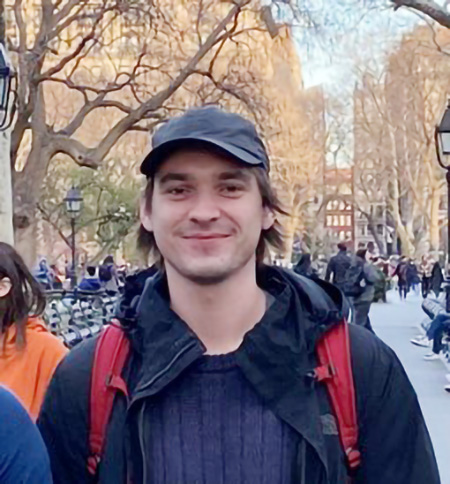
SPEAKER PROFILE |
 Dr. Artem Denisov Ensslin Group, ETH Zurich Switzerland |
Spin-Valley Protected Kramers Pair in Bilayer Graphene
Abstract
The intrinsic valley degree of freedom makes bilayer graphene (BLG) a unique platform for semiconductor qubits. The single-carrier quantum dot (QD) ground state exhibits a two-fold degeneracy, where the two states that constitute a Kramers pair, have opposite spin and valley quantum numbers. Because of the valley-dependent Berry curvature, an out-of-plane magnetic field breaks the time-reversal symmetry of this ground state and a qubit can be encoded in the spin-valley subspace. The Kramers states are protected against known spin- and valley-mixing mechanisms because mixing requires a simultaneous change of both quantum numbers. Here, we fabricate a tunable QD device in Bernal BLG and measure a spin-valley relaxation time for the Kramers states of 38 s at 30 mK,
which is two orders of magnitude longer than the 0.4 s measured for purely spin-blocked states. We also show that the intrinsic Kane-Mele spin-orbit splitting enables a Kramers doublet single-shot readout even at zero magnetic field with a fidelity above 99%. If these long-lived Kramers states also possess long coherence times and can be effectively manipulated, electrostatically defined QDs in BLG may serve as long-lived semiconductor qubits, extending beyond the spin qubit paradigm.
Born in 1995 in Vladivostok, Russia
Postdoctoral Researcher in the Nanoelectronics Group at ETH Zurich.
Focused on graphene-based van der Waals quantum devices.
Ph.D. in Physics from Princeton University (2023, Petta Group)
B.S. in Applied Math and Physics from Moscow Institute of Physics and Technology (2019)
which is two orders of magnitude longer than the 0.4 s measured for purely spin-blocked states. We also show that the intrinsic Kane-Mele spin-orbit splitting enables a Kramers doublet single-shot readout even at zero magnetic field with a fidelity above 99%. If these long-lived Kramers states also possess long coherence times and can be effectively manipulated, electrostatically defined QDs in BLG may serve as long-lived semiconductor qubits, extending beyond the spin qubit paradigm.
Bio
Dr. Artem DenisovBorn in 1995 in Vladivostok, Russia
Postdoctoral Researcher in the Nanoelectronics Group at ETH Zurich.
Focused on graphene-based van der Waals quantum devices.
Ph.D. in Physics from Princeton University (2023, Petta Group)
B.S. in Applied Math and Physics from Moscow Institute of Physics and Technology (2019)